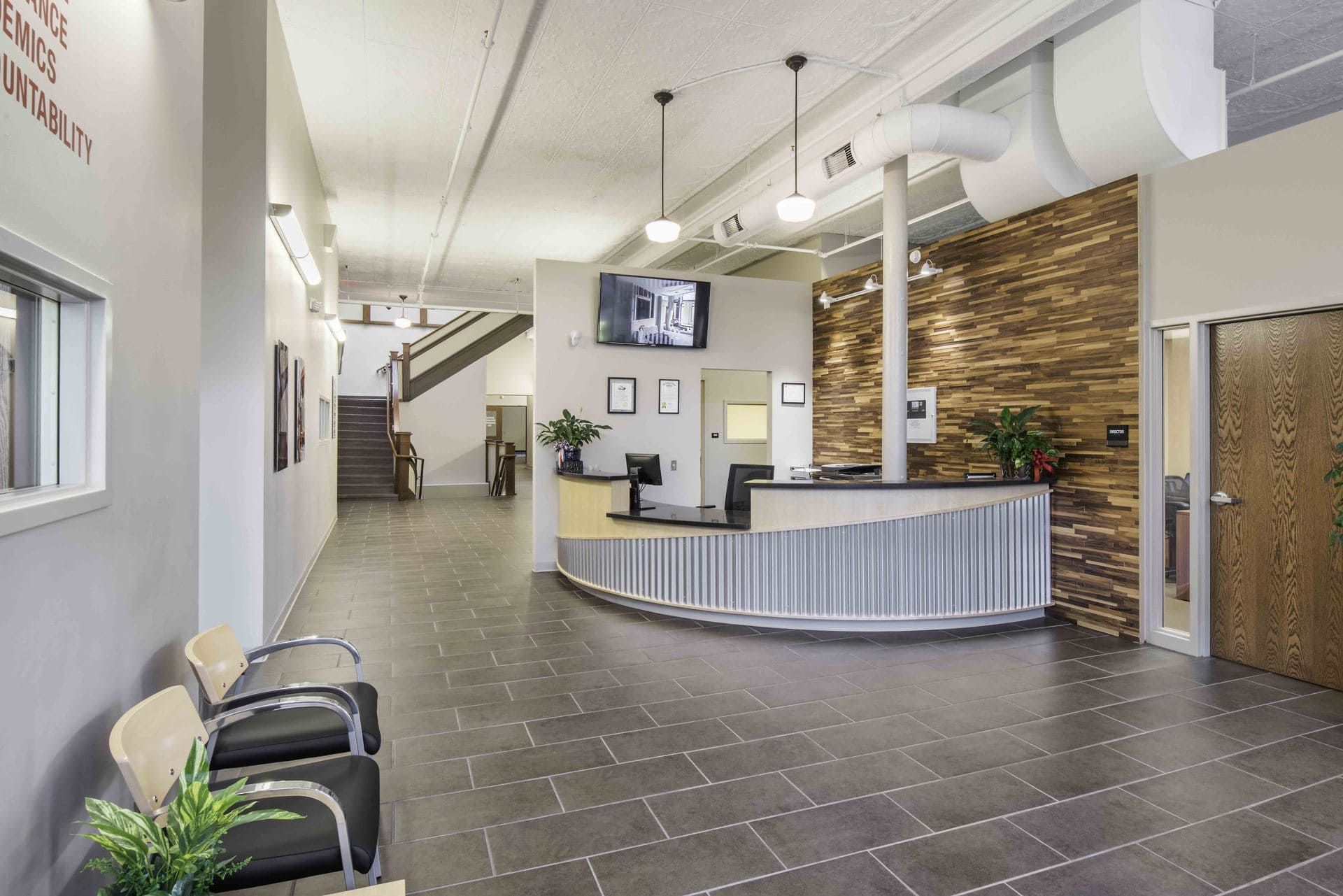Office Design Today: Designing the Interior
An exciting moment in any business’s time line is an office move or renovation. Responsibility and organizational charts are evaluated, departmental adjacencies are compared and the company culture is a topic for space planning and future growth.
A team of professionals is engaged with the business through all facets of this process. This team is typically comprised of a real-estate broker, architect, interior designer and a contractor. Throughout the process, various team members bring their knowledge and expertise to present the whole package to the client. This article will focus on the interior design component of the team.
Interior design is a crucial element in a successful renovation or move. This practice pairs the company culture with the built environment. Key tools for evaluation and implementation include: integrated technology, versatile furniture, defined and undefined spaces that facilitate a variety of functions and most importantly, the people in the space. Various social and learning styles are evaluated through surveys and interviews with key team members. The discoveries in this information-seeking process will help mold and direct the design of the space. Enhanced productivity, a sense a community within the organization and subtle branding of the environment with a pleasing aesthetic are all benefits from successful interior design.
Throughout the move/renovation the interior design team will work closely with the contractor and the client to keep the project on schedule and budget. After the client has moved into the space and the dust has settled, it is important to have a debrief and post move/renovation follow up meeting. In the initial three to six months after the project is complete, the client will “get to know” their new space and can reflect on their new interior environment. Final interior touches are discussed at this time for further enhancement of the space. These final touches can include adding greenery to promote employee well-being and aid in reducing stress. Artwork installations can be added for aesthetic and visual interest, along with layering and balancing acoustic systems for a pleasing environment.
Through the systematic coordination of research, analysis, implementation and collaboration of all project team members, the final result is an interior space that not only fulfills the project goals but has inspired and enhanced the lives of those who experience it. The interior design process, regardless of the depth of the scope, is a creative process with positive, productive results.
November 04, 2016
